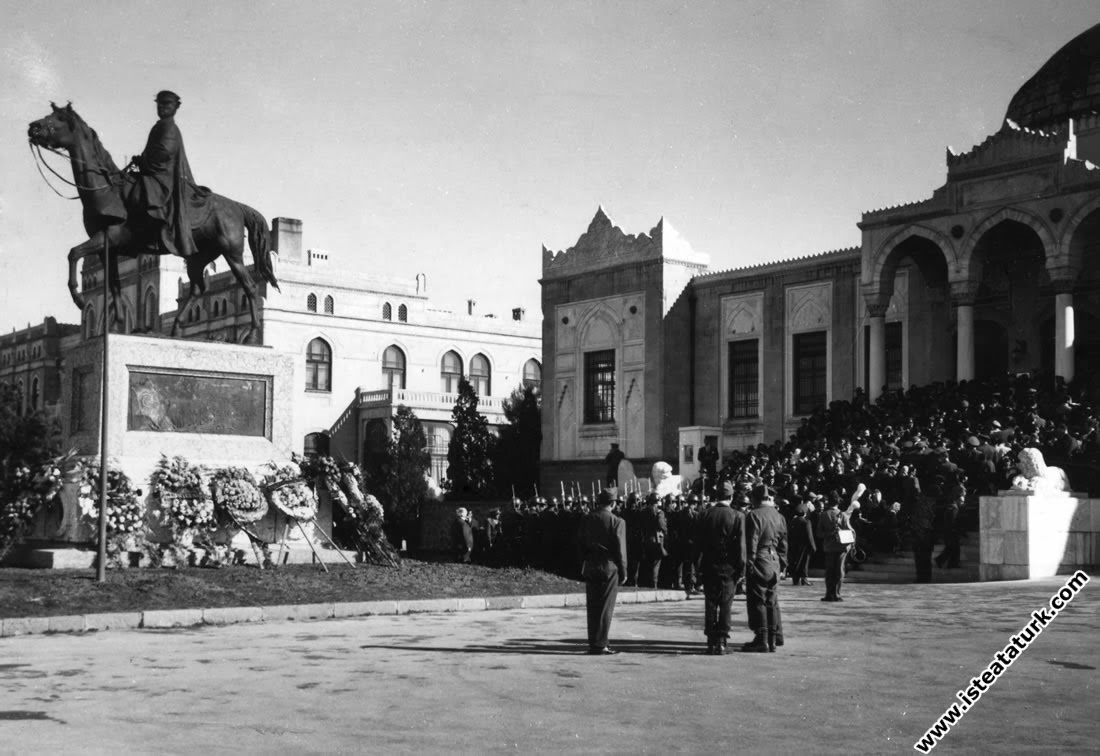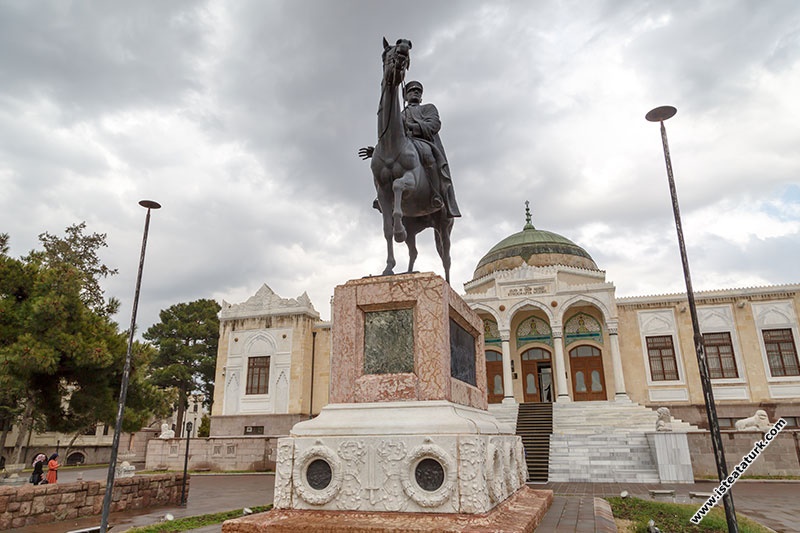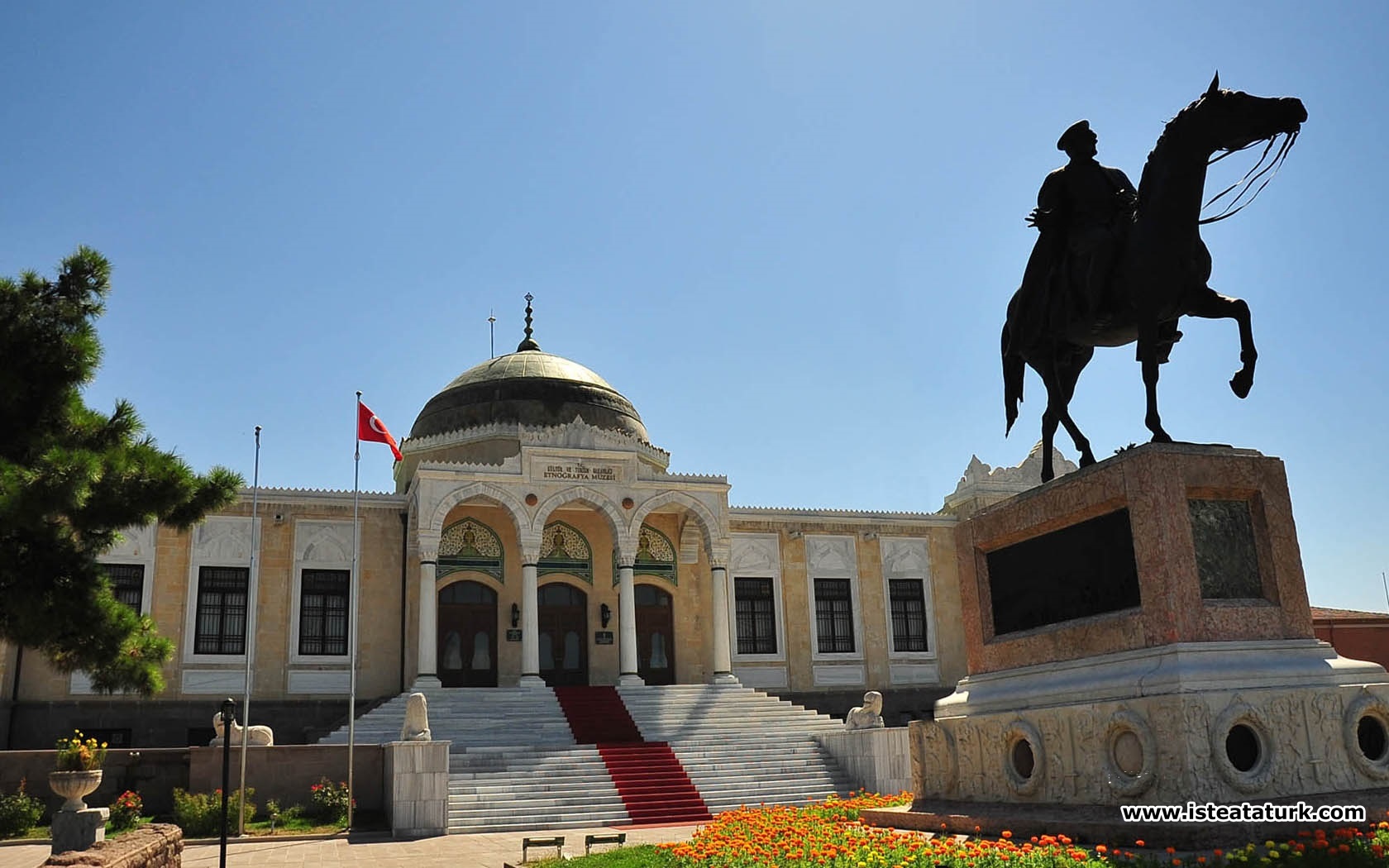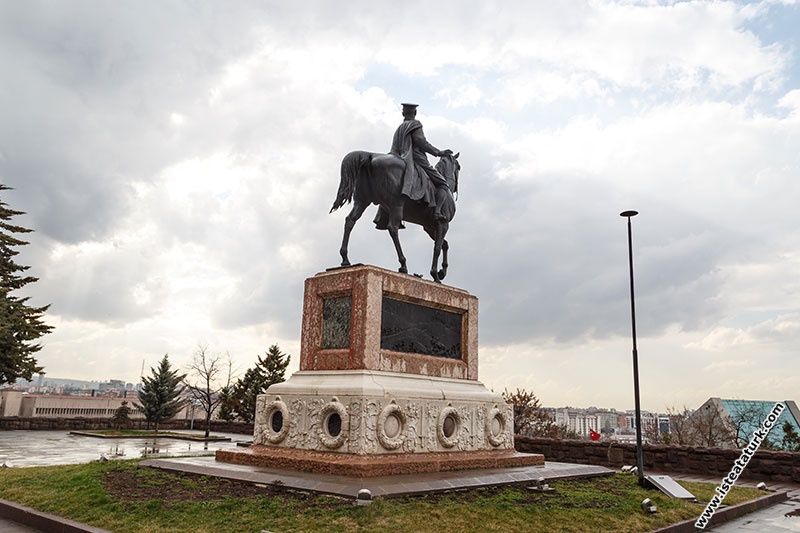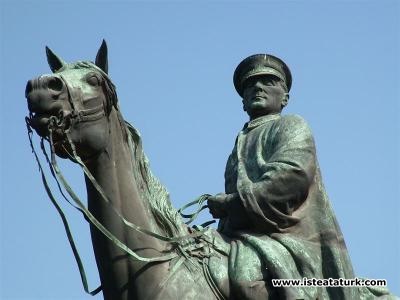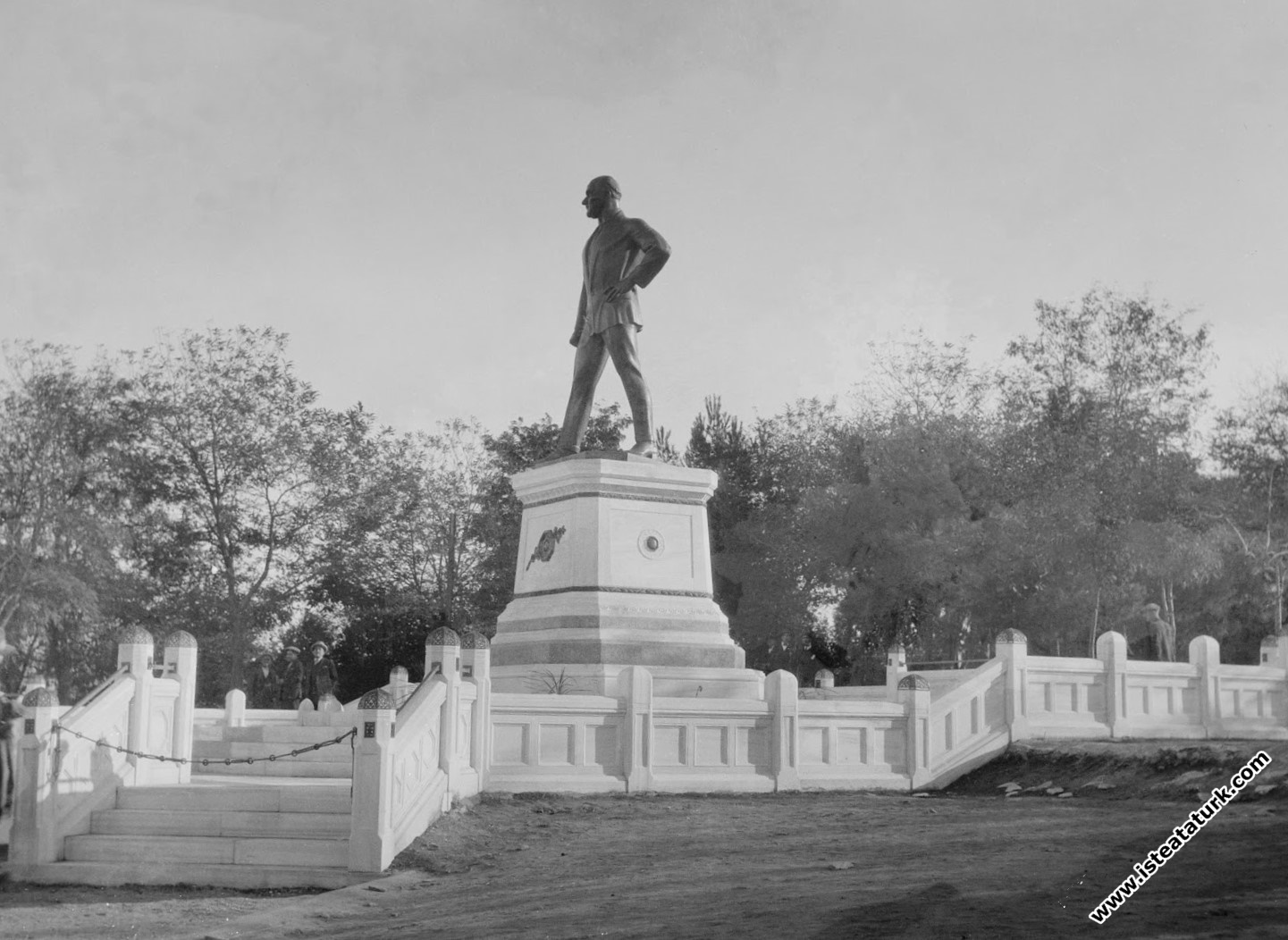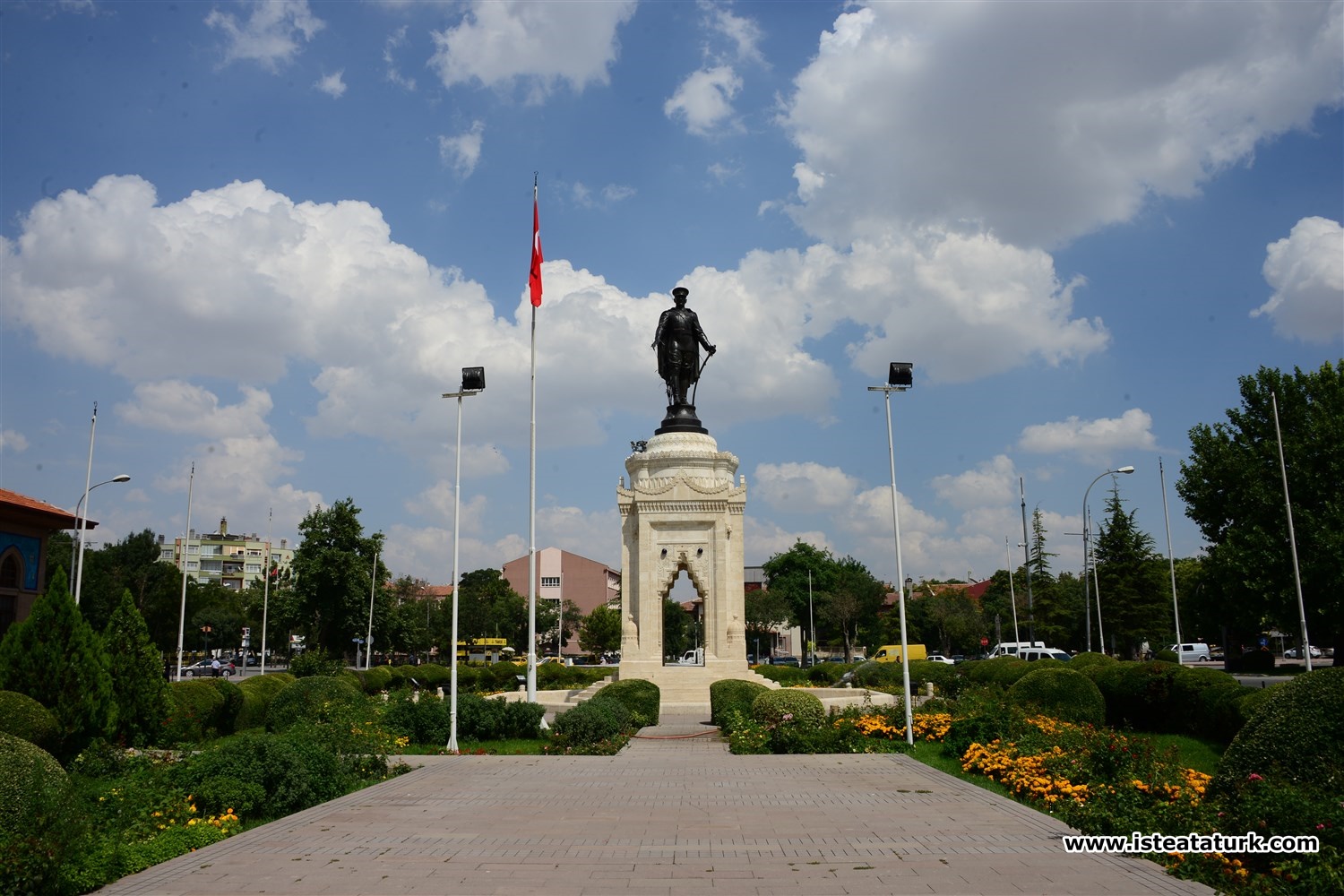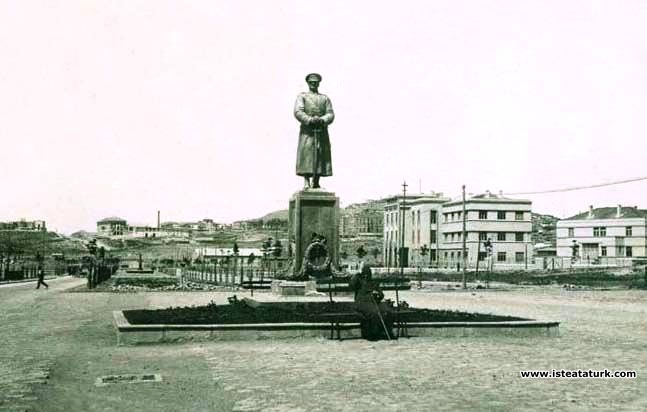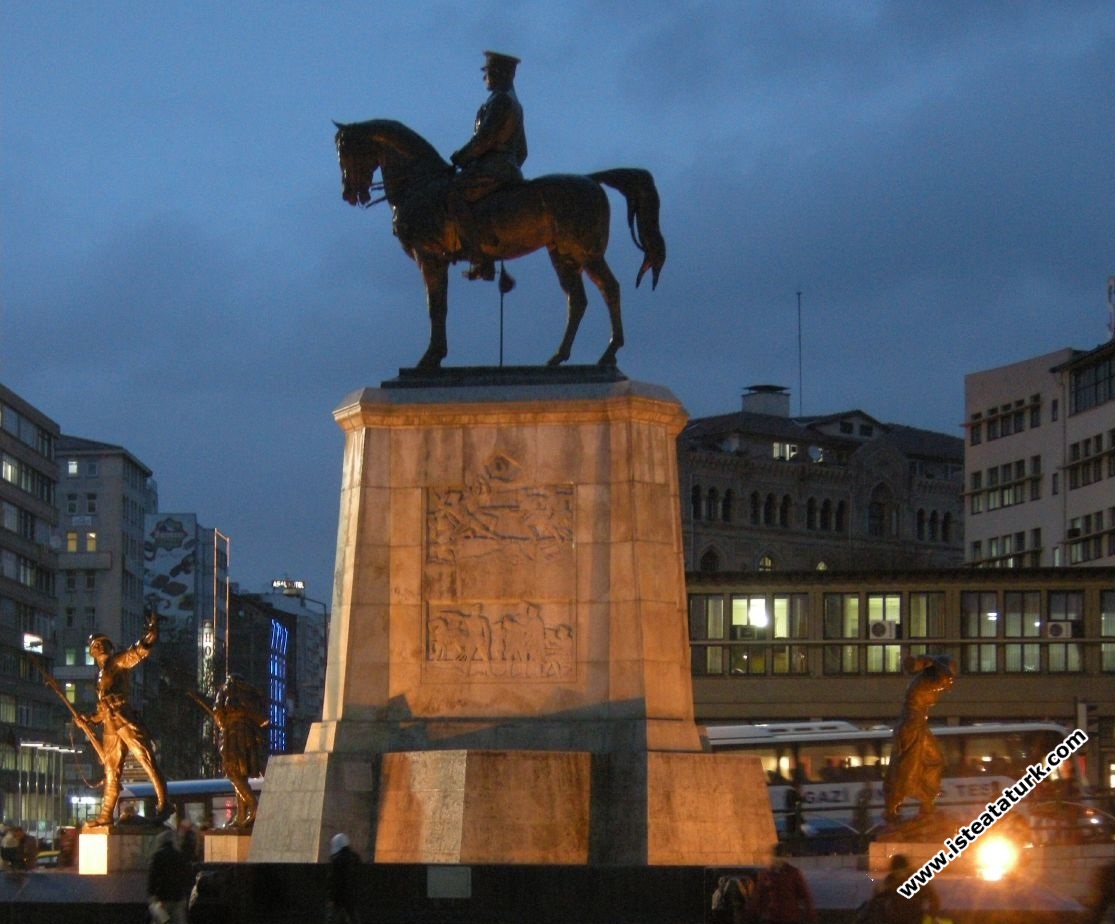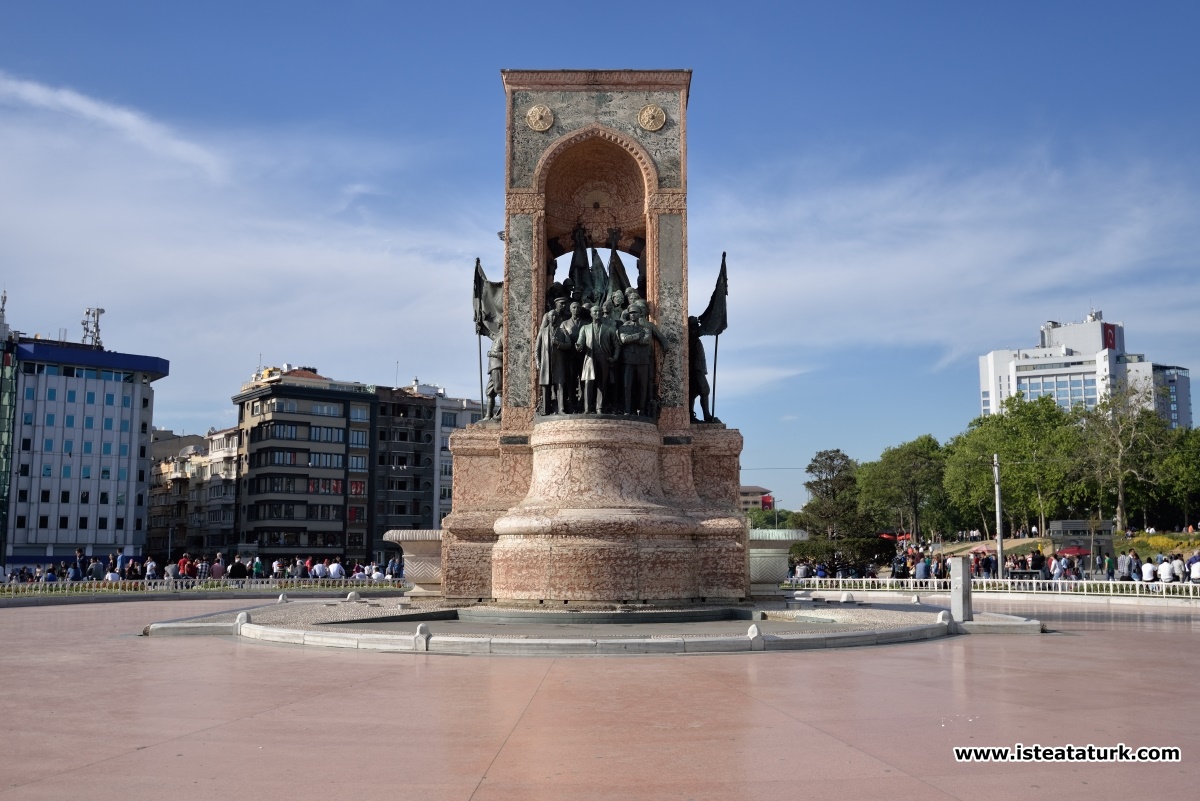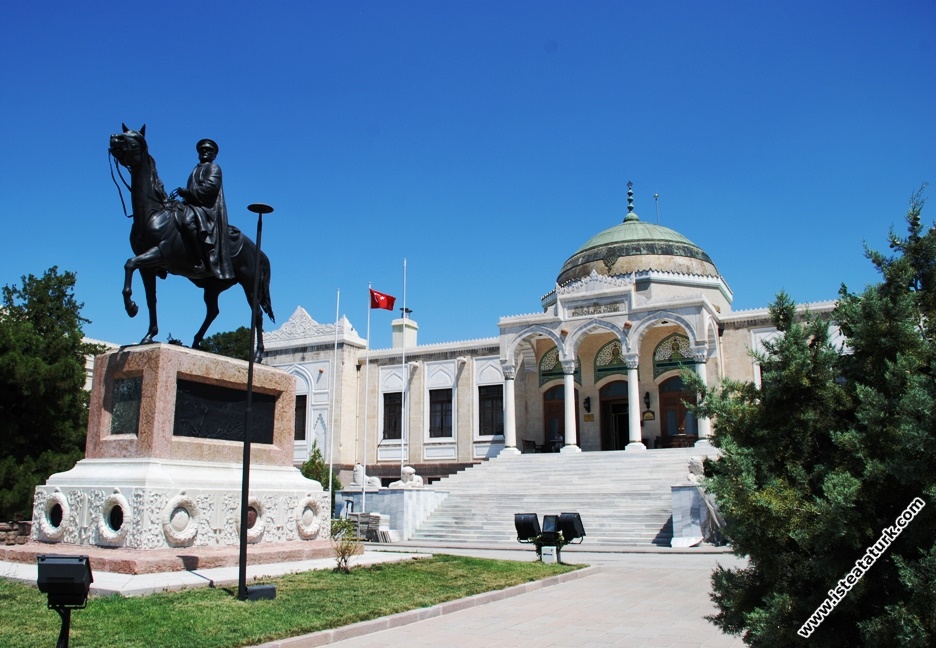
Atatürk Monument, Ethnography Museum, Ankara
Character Size
Atatürk Monument, Ethnography Museum, Ankara
Atatürk Monument, Ethnography Museum, Ankara
LOCATION: Ankara, in front of the Ethnography Museum
DATE: October 24, 1927 (Anonymous 1927a:l)
ARTIST: Pietro CANONICA
BY: Ministry of Education (Eyice 1986:9)
PROJECT FORM : Competition (Eyice 1986:9)
COST OF SELECTION COMMITTEE : -
PLACE OF MADE: Italy/Trino (Eyice 1986:17)
MONUMENT
Material: Sculpture; bronze, Pedestal; marble
Dimensions: Sculpture; 5 m., plinth; 3 meters
Inscriptions: -
HISTORY: The monument is in front of the Ethnography Museum, which was built on the hill that used to be the old prayer hall. This monument was erected at a point that dominates the city during the period. According to Eyice (1986:8), Canonica won the monument competition opened by the Republic of Turkey and implemented its project. However, no other source containing this information could be found. The statue was cast in Italy. The reliefs decorating the pedestal were made in Venice. In fact, it was installed after a while before the opening ceremony (Anonymous 1927e:2). The statue, which was brought to Ankara in June 1927, was placed on the pedestal on October 29, 1927, but the opening ceremony was held on November 4, 1927 (Anonymous 1927a; Anonymous 1927f).
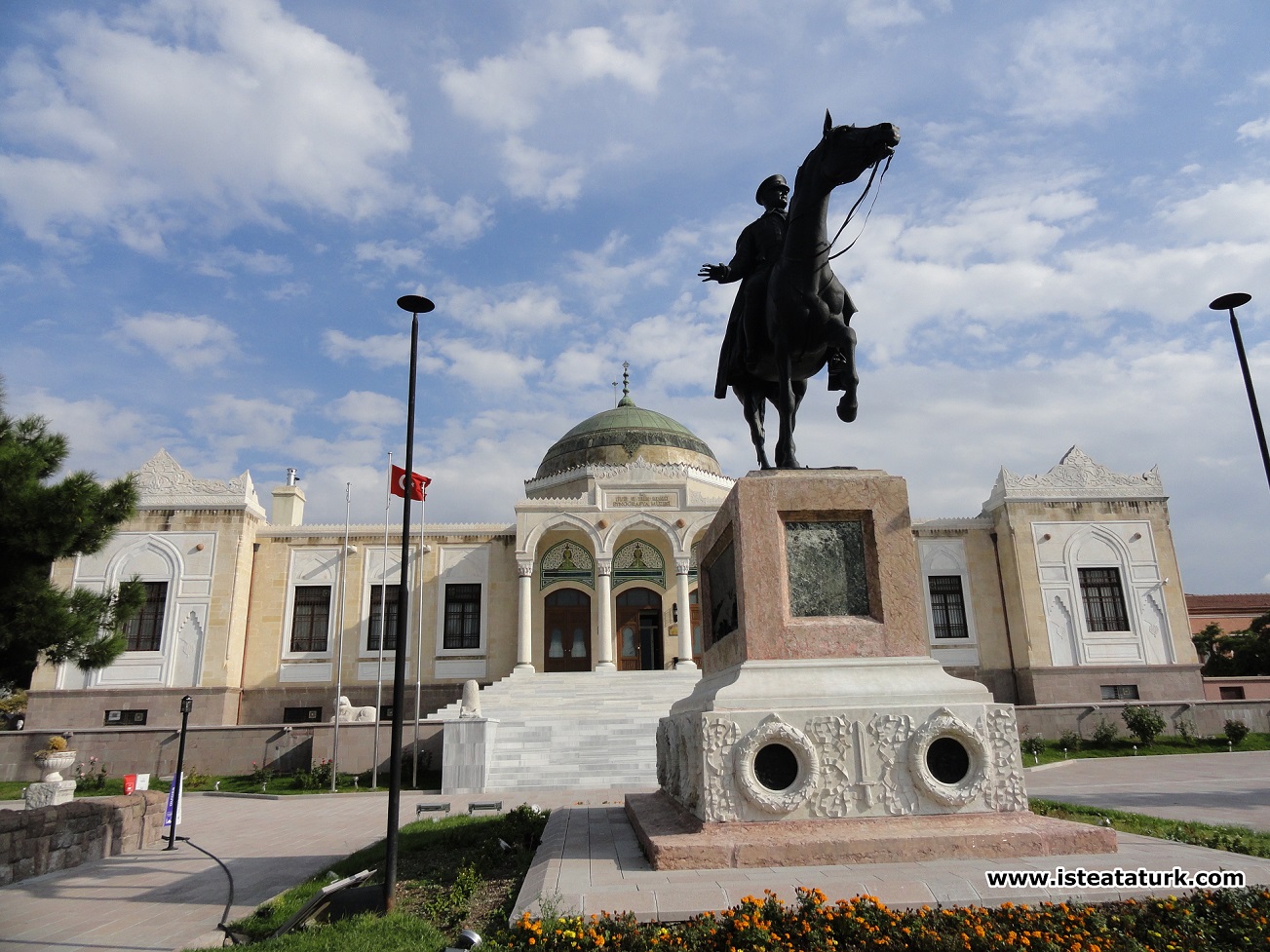
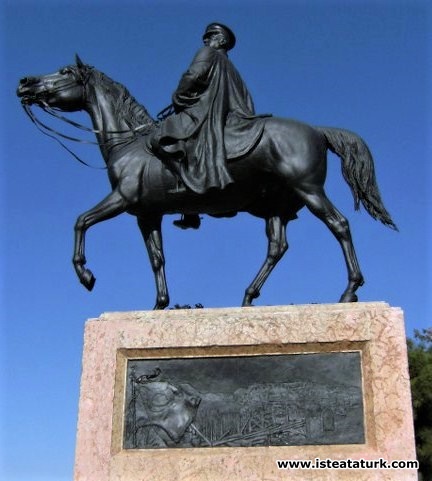
Mounted Atatürk Monument
The opening ceremony of the monument started at half past ten. Speaker of the Assembly Kazım Pasha, Mayor Asaf Bey, government officials, sculptor Canonica and the public attended the opening ceremony. A wooden tribune was set up for the guests to watch the ceremony, and a buffet was prepared inside the museum. After Asaf Bey's speech, the monument was opened when İsmet Pasha cut the ribbon (Anonymous 1927a:1,2).
DESCRIPTION: The monument rises on a two-level pedestal in the form of a rectangular prism resting on a platform. In the statue on the pedestal, Atatürk is shown on a horse. The horse carrying Atatürk stands on three legs. His right front leg is high off the ground, bent at the knee at a ninety-degree angle. This stance shows that the horse is in motion. Atatürk's right hand is outstretched and his left hand is holding the reins of his horse. His head is turned to the left. He sits upright on the horse. However, he has a very calm facial expression. Atatürk, with his Marshal uniform and facial expression, is depicted as the victorious commander in this monumental statue.
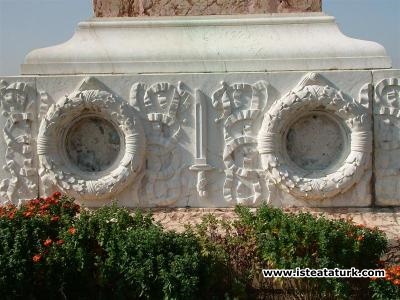
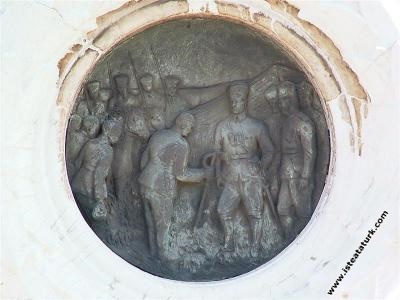
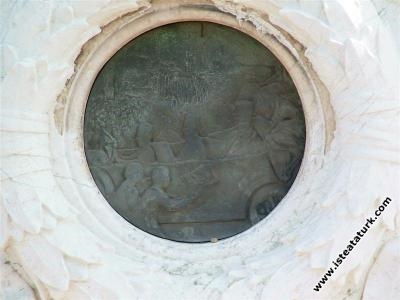
Medallions
There are three medallions on each side of the lower level of the pedestal, and two medallions on the front and back, surrounded by garlands. There are bronze, low reliefs inside the medallions on the obverse and reverse sides of the pedestals of which the insides of the medallions on the sides are empty. A victory scene is depicted on the medallion on the right of the obverse; Atatürk is seen wearing the marshal uniform with a cape he wore during the Battle of the Commander-in-Chief. The captive enemy commander delivers the Trokopis sword to Atatürk. The medallion on the left represents the Turkish youth's thanks and love to the victorious commander. Here, the children presenting bouquets to Atatürk sitting in his open-top car and the people in the background with enthusiasm are depicted.
On the medallion on the right side of the reverse, on the front plane, in the center, Atatürk is shown shaking hands with the male figure opposite him. Eight male figures placed on various planes watch the event. On the medallion on the left, Atatürk is depicted speaking on the podium inside the Parliament building.
The second level of the pedestal, which is higher, is accessed by wide profiles. A low relief bronze panel is mounted on each side of this section. The battle scene on the left symbolizes the National Liberation War. The Battle of Sakarya is depicted on this panel. On the right-hand panel, there is a castle on the back plane and a sun depiction starting from the upper left corner and spreading to approximately one-third of the panel. The city indicated by the castle is Ankara (Anonymous 1927e:2). With the victory of the war, the sun rising over Ankara reflects freedom and peace.
Source: A A M Cumhuriyet Dönemi Anıt Heykelleri, Yrd. Doç. Dr. Kıvanç Osma, Ankara 2003. ISBN: 975-16-1678-6. Sayfa:36-39
Atlı Atatürk Anıtı Görselleri
